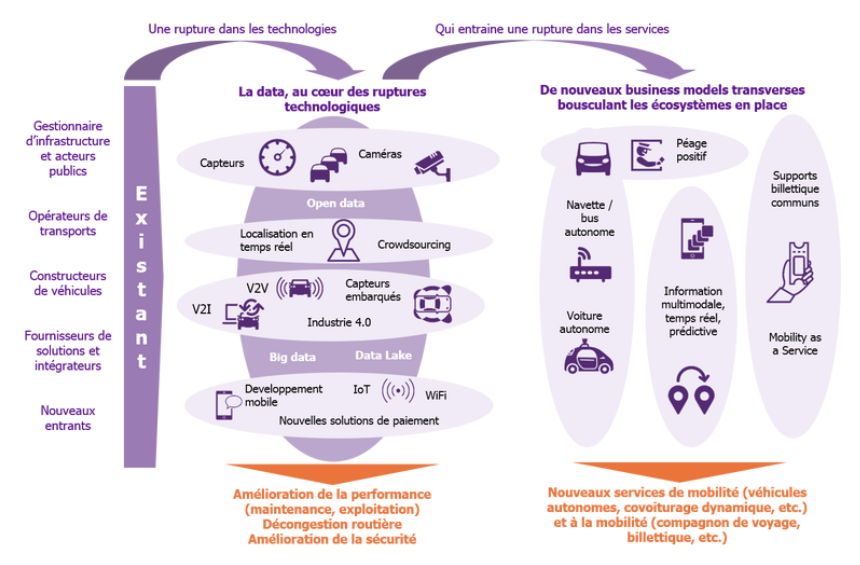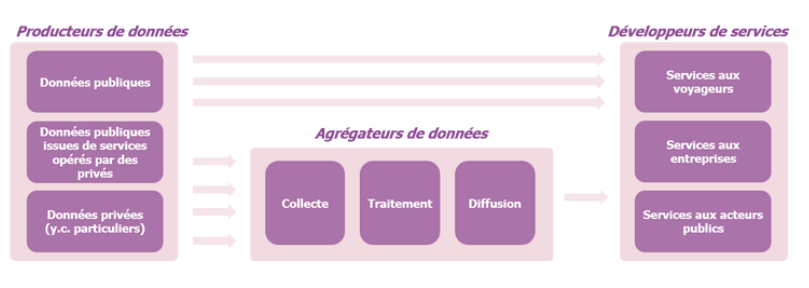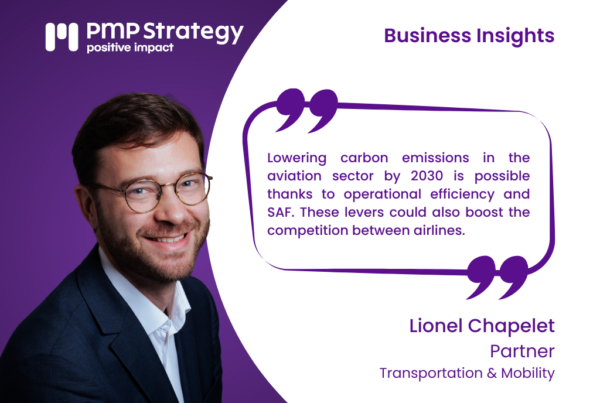The explosion of data is at the heart of the emergence of new mobility services. But, what are ultimately the conditions allowing the emergence of innovative mobility services? How to set up an ecosystem conducive to the emergence of these services? And what is the place of public actors in this ecosystem? The solution seems simple – you have to involve all the players who have the necessary data and skills – but its implementation is not easy…
DATA CAUSES BREAKS IN MOBILITY SERVICES
Open data, big data, data mining, data scientist, data viz., Data platforms, are all buzzwords found in transport as in other sectors.
But, in transport, data takes on a particular importance because more and more data is produced and used by more and more actors (public actors, transport operators, car manufacturers, sensors, crowdsourcing and mobile applications, etc.). This massive production of data has the consequence of completely de-piloting traditional ecosystems and causing real disruptions in mobility services.
FROM SERVICES RATHER THAN FROM DATA?
It is essential for transport players to invest in data collection and the creation of data platforms. However, data collection should not be an objective in itself. Many players forget that it is above all a matter of using data as a “fuel” for the development of services based on the use of this data.
Thus, it is preferable to start from the services, or the types of services that one wishes to bring out, and then specify the right data scope to use. And, it is easier to find robust business models by relying on services rather than relying solely on data for which willingness to pay may be low, especially when it comes to data easily. accessible elsewhere (web scraping).
In fact, the temptation of public actors to make mega data warehouses available to third parties so that they can develop high value-added mobility services is commendable. However, obstacles still too often prevent the development of sustainable services .
- The data is partial, especially data from open data, and key information (real time) is often missing,
- The data is delivered in heterogeneous formats, which creates barriers to entry and limits the scalability of services, especially for small players and start-ups.
Supporters of open data will indicate that a lot of data still needs to be made available and that we must continue to open up data and reflect on the standardization of data to put in place the conditions necessary for the emergence of services. perennial.
Others will argue that the most valuable data is ultimately unlikely to ever be available on public platforms, in particular commercially sensitive data (real time, regularity and quality of service, availability of services and infrastructure, etc.), or even data produced directly or indirectly by individuals (the important issues of anonymization and respect for privacy legitimately limit the sharing and reuse of this data).
Vast debate which has already been the subject of numerous publications and several regulations and which is far from over. But, taking the example of traveler information services, we note pragmatically that at present the most popular services (Google / Waze, Citymapper, etc.) were not born thanks to open data. And the mobility services of tomorrow are currently developing more in closed ecosystems, in a logic of open innovation. The various players contribute their data, but above all, their business knowledge and the technological building blocks essential to create disruptive services and differentiating competitive positions: Uber / Volvo / Ford (autonomous car), Keolis / Navya (autonomous bus), Gemalto / Orange / RATP / SNCF (Wizway Solutions, JV dedicated to the development of contactless mobility).
WHAT PLACE FOR PUBLIC ACTORS TO MAKE THE EMERGENCE OF INNOVATIVE MOBILITY SERVICES?
Many public actors are wondering about the actions to be taken in order to bring about the emergence of innovative mobility services on their territory which have a sustainable economic model and contribute to the general interest objective.
Providing a general answer to this question is obviously complex. Schematically, two major positioning options are indeed available to public actors:
- Invest in the provision of data, and where applicable position itself as an aggregator of mobility data, so that third parties take charge on this basis of developing high added value services (for example, traveler information services real-time and predictive, precise and real-time information on work, events, incidents and congestion, etc.);
- Position yourself as a service developer. To develop these services, public players then rely on their data base, supplemented by data from private players, such as Greater Lyon and the Optimod / Opticities program.
Each positioning has its share of advantages and disadvantages. The positioning of a data aggregator limits investments and the involvement of public actors. It nevertheless requires the ability to animate an ecosystem promoting the development of services (communication on available data, support for service developers). The data must also be made available in a format and methods that facilitate their reuse (API, web services).
Positioning as a service developer favors the emergence of services in accordance with the objectives of the Public Power since these are directly developed under the guidance of public actors. However, it may require significant involvement (both financial and in terms of human resources and skills). Moreover, public players may find themselves in a “competitive situation” with services developed by private players: traveler information (reported by crowdsourcing applications), GPS, etc.
Finally, the choice of the best positioning to bring out innovative services is based mainly on political ambition and the resources of public actors. And, whatever the positioning option chosen, the involvement of private actors in the development of services is essential because they have key data and know-how to create agile and efficient services: big data, capacity development of powerful algorithms, skills in design and ergonomics of applications, ability to make rapid changes in short cycles, etc.







